#1 – Megalo Box
Which of these is not like the others?
Let me open by making this perfectly clear – never in doing year-end anime Top 10 lists (this is my eighth) have I been genuinely uncertain about the final spot right up until the moment I chose the #2 series. Heck, I could even see there being a bit of uncertainty for readers even now – the implication being that conceivably my eventual choice for #1 could have been left off the list altogether. I’m sure that uncertainty factor is pretty small, but the fact that it’s on the table at all is a testament to what a screwy year this was.
I won’t sugarcoat the truth – in a really good year, there’s no way Megalo Box would be my #1 series. It’ s a great show, but not a masterpiece – and one can infer from that 2018 was a year without any masterpieces in anime. Generally there’s at least one series that from the beginning of deliberations demands that it be #1, sometimes 3 or 4 competing with each other in my mind. 2018 simply wasn’t like that. When I searched for that place in my estimation it was empty, and I found myself literally in the position of thinking “Something has to be #1. So which one is it?”
So why Megalo Box specifically, then? Boku no Hero Academia’s best was certainly a bit more lofty, and Hi Score Girl was the show I personally loved the most (and those were the three series that I seriously considered). I wondered if I’d outsmarted or at least outthought myself in ranking Megalo Box first, but I truly don’t think so. It was a close shave, but when I really stared at the names and forced myself to decide which series felt like the #1 of 2018, it was Megalo Box. I’m a sucker for anime as high art, I admit it. And while it can’t go toe-to-toe in the ring with the likes of Shouwa Genroku Rakugo Shinjuu, Megalo Box is high art.
There’s a certain philosophical component to choosing between this series and Boku no Hero Academia (and it was a photo finish to be sure). Do you take the show that delivers the grandest apotheoses but has a few too many pedestrian moments along the way, or the one which is a more contained experience but more closely approaches flawlessness in the way it executes that experience? There’s no wrong answer I don’t think, but this year the scales tipped ever-so-slightly to Megalo Box for me. It had such a monumentally difficult job – updating a beloved but musty franchise for a new age without losing the essence of it – and it pulled it off with so much style and grace that it was impossible for me to go any other way in the end.
Like 2016’s 91 Days, Megalo Box is equal parts old Hollywood and both modern and classic anime (there are strong echoes of golden age Gainax and Madhouse and vintage buddy shows like Outlaw Star). Ashita no Joe is a homage to the American boxing story to begin with, so that’s no surprise. Megalo Box is indeed a very cinematic anime, both in the cinematography and direction and the narrative structure. In the real world boxing is a problematic sport to say the least (that’s a post all to itself, but not this one), but as a canvas for art it’s as good a sport as there is. The nature of the game – the loneliness of it, the square circle, the way it recalls the gladiatorial inhumanity of old Rome – is inherently dramatic and intimate in a way no other sport is.
It’s also personal – and that’s something Megalo Box definitely it as a story. Like Golden Kamuy it has a way of treating all its major characters like protagonists, yet has a titanic presence as the literal one. Gearless Joe’s story is riveting, a classic rags-to-riches tale with all the elements one would expect from a 40’s boxing flick. But it’s also very much a part of the Ashita no Joe legacy, and that’s why for me what really makes this series exceptional is the ending. That feeling has grown stronger and stronger as I’ve had time to reflect on it, and while I won’t spoil it here, I’ll just say that it took real guts for the anime staff (I suspect the credited writers are pseudonyms, so who actually wrote Megalo Box is something of a mystery) to take the harder path – and in doing so to push their characters to choose the harder path.
In the end, for me there was just a little more speaking for Megalo Box‘ case than any other 2018 series. The way it balances loyalty to its heritage and remaining contemporary (the use of fourth wall breaking rap and hip-hop is beautiful), Hollywood and anime, tragedy and hope – “art” is the word that keeps coming to mind for me. This is anime that’s artfully done in every sense of the word. And even if it doesn’t necessarily stand on-par with some of the series that have topped this list over the decade, there’s no question that Megalo Box belongs, and that it’s going to be remembered for a long time to come.
*Author’s Note: Those keen-eyed observers among you will have noticed that the order of this list isn’t the same as it was when originally posted. The fact is, upon reflection I decided that I’d ranked Koi wa Amaegari no You ni too low. This is the first time I’ve ever tweaked the order after posting, but again, this is a weird year so I guess it’s not that surprising. So why the change?
- When I had time and was looking for something to re-watch, it was the only series on the top 10 that jumped out. That has to mean something. And in binging it I confirmed what I suspected, that I hadn’t placed it high enough on the list – it really is that good. I hated to do it, but the posting of the Top 10 is a blip in time – once it’s out there it’s out there, so may as well get it right.
- What a soundtrack. Seriously.
- Hirata Hiroaki is so, so good. What an actor. He rarely gets discussed when the topic is “greatest seiyuu ever” – or even currently – but he should be. I think the issue is that he specializes in anti-flashy characters, but one of the greatest compliments one can pay an actor is “I can’t imagine anyone else playing this role”. Can you imagine anyone else playing, say, Nanba Mutta? The fact is that Koi wa Ameagari was a series that was balanced on a knife’s-edge to begin with because of its premise – without Hirata’s grounded, unshakable decency at its core I’m not sure it would have worked as an anime.
#2 – Boku no Hero Academia Season 3
This is becoming an annual tradition.
There are a lot of subordinate issues with ranking Boku no Hero Academia #2 on this year’s Top 10 list that must be addressed, so let me give the show its due before I get into any of that – it was great. And that matters more than anything else. Boku no Hero Academia is a terrific manga, and Bones and Nagasaki Kenji are doing a phenomenal job adapting it (as you would expect). If Gegege no Kitarou had the finest anime episode of the year, this series probably had the finest single moment – and probably the finest story arc too.
Given this franchise’s history as it relates to this list, a couple of questions beg to be asked. It’s gone from #9 to #4 to #2 – does that mean it’s getting better? Well… I would say the second season was certainly an improvement on the first, but it’s not so clear to me that the same is true with this season and the second – it’s very close, in fact. What’s not close for me is the ranking of anime as a whole in those three years. 2016 was a very solid, above-average year. 2017 was a so-so one, and 2018 sub-par across the board but especially at the top. And that’s the biggest single reason why BnHA’s ranking has gone up every year. But…
I said earlier that Season 3 had the best moment and best story arc (the one which contained that moment) of 2018, but it probably had the best cour of anime too. Don’t get me wrong, the second cour was excellent, but if HeroAca S3 had ended after the first I suspect it would have been this year’s #1 for me. It’s certainly the best cour of anime the series has delivered, and the best season of shounen since Hunter X Hunter 2011 finished its run. This is no coincidence, as this was probably the best part of the manga too, and Nagasaki has generally been very faithful in adapting it.
I’m not going to dive too deeply into the subject for obvious reasons, but some might argue (and I might be one of them) that the Boku no Hero Academia manga has peaked (so far) with the “Hideout Raid” arc and it’s indescribably epic conclusion. And it’s not only because of that moment, but the stunning way Horikoshi handles the quiet, melancholy aftermath of it. If anything it’s that part which shows this series to be so far removed from the archetypical battle shounen it sometimes masquerades as. The rest of Season 3 is still excellent – there are no clunker arcs here, though a couple of anime-original episodes do somewhat interrupt the narrative flow. But it’s the first 12 eps which reign supreme as BnHA at its finest.
Without knowing what 2019 is going to hold for anime (though able to make an educated guess) it’s impossible to say whether HeroAca would be a lock for a fourth consecutive year in the Top 10 (which would be a first for LiA). While I don’t feel the manga has ever reached the heights of “Hideout Raid” since it ended, I still think the answer would be “yes” – except it’s probably going to be a moot point, as Season 4 isn’t scheduled to begin until Fall 2019 and it will almost certainly be two cour once again (thus pushing its ranking eligibility over into 2020). This is a pretty conservative approach, but as they usually do with their most prized properties, Shueisha is being very protective of Boku no Hero Academia.
For all that, I do worry about this series, as it’s become an integral part of my life as a fan of both anime and manga. Horikoshi-sensei seems to be having a rough 2018 – the artwork has perceptively gotten less intricate, and most of the recent chapters have been only 12-13 pages (often with apologies for that amended to them). As we know drawing a serialized weekly manga is very, very hard work – “brutal” is no exaggeration. And Boku no Hero’s ascension to the status of massive international phenomenon (the success of the manga and the theatrical film in the U.S. is no less than astonishing) must surely be exerting tremendous pressure on a still very young (he just turned 32) mangaka. Horikoshi hasn’t the benefit of a “pre-hit” to ease him into this experience, as Togashi did with Yu Yu Hakusho preceding Hunter X Hunter – both his serialized manga before BnHA were short-lived. My sincere hope is that both Horikoshi and Boku no Hero Academia have a long and healthy future, and nothing would make me happier than to see it repeat as a staple of year-end Top 10 anime lists for years to come.
#3 – Hi Score Girl
I’ve spoken about how the generally sub-par nature of 2018’s anime field has made this list the most personal I’ve yet compiled, and this spot really tests the limits of that effect. On some level of course every year is a personal list, because it’s my personal top 10 of the year, not some attempt to compile an objective “10 best” list. But just as one can’t deny the subjectivity of the exercise, at some point objective concerns have to be factored into the equation too. And ranking Hi Score Girl #3 is the best attempt I can make to balance out those two sometimes-conflicting measures.
I don’t think it would be a stretch to say that Hi Score Girl was my favorite anime of 2018. It was the one I felt most emotionally connected to, for certain. And by some (at least in the attempt) objective measures I think it was “best” too. Certainly this series had the best writing of any series in my opinion, and the most engaging and relatable human story. But you can’t ignore the fact that from a production standpoint, it stands out on this list. It’s a 100% CGI show and, while there’s an artistic argument to be made for that given the themes involved, the fact is that it simply doesn’t look as good as a hand-drawn series. It doesn’t display the same talent in the production of it. And that matters, there’s no persuasive case to be made otherwise. In the end, this was as high as I could justify ranking it given those considerations.
I don’t recall production quality ever factoring in nearly so much to a decision this high in the table, but 2018 hasn’t been a normal year for anime or the process of compiling this list. And the fact is that after the agony that fans of this manga suffered through, getting a CGI anime is a bargain most of us would happily accept. As I said there’s at least a case to be made that it makes sense for the story, and in the depiction of the “in-game” sequences with their early 1990’s graphics, the CGI totally works. And most importantly the anime is totally successful in capturing the charms of Oshikiri Rensuke’s manga, and doesn’t mangle the story despite being only one cour (plus 3 upcoming OVA episodes – for now).
Yes, the wait – as long, pointless and a testament to human stupidity as it was – at least made the joy of finally seeing Hi Score Girl on-screen that much sweeter. Oshikiri’s manga is a masterpiece, no less – one of the best adolescent romances and memoirs in manga. It’s a vivid and achingly real depiction of an era and of the experience of being a kid at the dawn of home gaming’s meteoric rise. And the anime nails that side of the story – it’s perfectly-cast and cleverly directed, melding the two main themes of the narrative seamlessly. The fact that I love HSG as much as I do given that I wasn’t even that much of a gamer is testament to how brilliant a human story it tells.
Love triangles are dodgy things, no question about it. But Oshikiri – and director Yamakawa Yoshiki – pull this one off in splendid fashion. I adore all three of the main cast members, and none of them is mistreated by the narrative. Haruo is a superb protagonist, kind and principled and genuinely noble, yet the only one unable to see these qualities in himself. Akira could easily be a gimmick character with her self-imposed silence or a mere archetype of the ojou-sama trope, but it’s remarkable how well we come to know her in spite of the former and how distinct she is in spite of the latter. And Koharu is undeniably the third wheel on this vehicle, yet no third wheel’s plight has every been more heartbreakingly depicted than her’s.
Hi Score Girl is, in short, a great story. A romance, a memoir, a love letter to a subculture and a testament to the virtues of being truly passionate about something – it is a masterpiece. The bar for the anime wasn’t impossibly high in that sense – it had to get it right, not reinvent anything. But the fact is that it succeeded, and in doing so was one of the very best series of the year. It should never have taken as long as it did to happen, but that’s water under the bridge now. As to the future, that’s very much up in the air – the manga has just ended and and the first volume of the anime sold decently on disc, so a second season to follow the OVAs and finish telling the story is not a totally unrealistic possibility. But being a Hi Score Girl fan has taught me not to get my hopes up and to be happy with whatever I get, and I’m certainly grateful for the season we did get and the special episodes to come.
#4 – Golden Kamuy
My year-end Top 10 (especially this part of it) has never, ever been this difficult. I find myself sitting down to write and still not sure of some of the placements, and while I’ve had that happen at the tail-end of the list it’s a first for these heights. And I see a pattern here for certain – because I’m struggling to find series that really feel like they belong where they’re being ranked, personal choices are faring better than they ever have.
That brings us to Golden Kamuy, a series – not the first this year – which a detached assessment reveals should probably be higher-placed than one of the shows above it. And I do love Golden Kamuy, make no mistake. You know the drill here, I just wrote a series review post on this show so I’ll mostly let that speak for itself with regard to why it ranks as highly as it does. It is indeed a great series, just not a masterpiece – and ideally, I would love shows in the top 5 at the end of a year to be masterpieces. There were a few too many middling episodes (especially near the end of the first cour) and the narrative was a bit too disjointed at times for me to rank the series on that level.
On the other hand, I would certainly say that Golden Kamuy’s second cour (as it was a split, this ranking reflects the series in total) was better than the first. It really showed off what makes this show so unique, starting out with a string of wildly over-the-top blockbuster episodes before delivering some of the most emotionally-penetrating moments of its entire run. Noda Satoru’s manga is as stylistically diverse as any I know, and Nanba Hitoshi has if anything accentuated that with the anime. The humor here is Python-esque at times (Edogai-kun fleeing through town in a bearskin of his own creation is undoubtedly anime 2018’s finest absurdist sequence), the violence and gore can be off the charts, and the issues – both historical and personal – Golden Kamuy confronts are as serious as it gets.
What makes Golden Kamuy the standout it is, though, is without question the cast. The real genius of Noda-sensei as a storyteller is that he writes every major character as if they’re the protagonist of their own story. That gives each of them a weight and presence that’s almost unmatched in anime, where shows typically reflect a pecking order among the cast that’s almost always adhered to. This series is not about tropes or archetypes – it’s about indelible and unique individuals eyes-deep in a fascinating and complex plot rich in historical and cultural details. Thank goodness for shows like Golden Kamuy (not that there are many of them), because anime needs as many mold-breakers as it can get. And if they happen to succeed commercially, so much the better.
#5 – Koi wa Ameagari no You ni
I don’t think there can be any question that SSSS.Gridman was the show I least expected to make it to this list when I started watching it. But Koi wa Ameagari no You ni would certainly be a close second. Yeah, it was a series from a great director (Watanabe Ayumu, who makes a very rare double appearance on the year-end Top 10 list) and a very good studio (Wit). But in many ways it had even a tougher sales job than Gridman – it was the premise itself that put me off.
It’s an old lesson not to judge an anime by its cover, but it’s an easy one to forget and it certainly applies here. A story about something like romance between a man in his forties and a high school girl is a minefield if ever there was one. The onus was on Koi wa Ameagari to not put a foot wrong in navigating that minefield, and damned if it didn’t pull it off. The clues were there pretty early that this series might have the chops – “Whatever you think about the concept of a love story between a 45 year-old man and a 17 year-old girl, there’s a right way and a wrong way to do it, and this series is doing it the right way” is something I said way back at the time of Episode 3. But that only tells half the tale of why this show worked.
I think the greatest compliment I can pay Koi wa Ameagari is that by the end, I wasn’t even sure exactly what I wanted from it. That’s how superb a job in did in selling the idea that something meaningful could happen between this world-weary cafe manager and a wounded but comet-bright teenager with the world at her feet (literally). This was a story about chasing dreams, and ultimately Masami and Akira’s role was to remind each other that they could be beautiful to someone else, both in body and soul. As bittersweet as the anime’s ending was, looking back on it from a remove of nine months it feels like exactly the right one.
While it’s ended on a disappointing note, this was a pretty solid year for NoitaminA on the whole. And not only was Koi wa Ameagari no You ni the best NoitaminA show in years, it was exactly the sort of series NoitaminA was created to showcase. Wit did a wonderful job with this show, which was gorgeous from top to bottom, as did Watanabe-sensei. And not to be overlooked is the cast (Hiroaki Hirata delivers yet another brilliant performance that could have come from no one else) and the soundtrack by Yoshimasa Ryo, which was probably the best of 2018.
#6 – Planet With
It would be hard to overstate the excitement I felt at the news Mizukami Satoshi would finally be coming to anime. He’s a fantastic writer who explores big, complicated ideas and does so with unpretentiously goofy humor and unapologetic sentimentality that’s always well-earned. It was a bit surprising to hear that it would be coming in the form of an original series when Mizukami-sensei has no many superb manga crying out for adaptation, but anything bringing the Water God to anime was something to be celebrated.
Of course Planet With then had to go out and stand or fall on its own terms, and stand it did – though anything else would have been a shock, given the source. I took a lot of heat in my early posts for this series for talking so much about the writer, but how could you not? To understand Planet With – what it was trying to say, and what made it distinctive as a series – you have to understand Mizukami as a mangaka. He has a clear and distinct vision that’s unlike anyone else in either medium, and it’s criminal that it’s taken so long for anime to recognize his genius.
There would certainly have been a time (after the tour de force Episode 8, for example) when I would have predicted Planet With would end the year even higher on this list. Mizukami-sensei is a master of narrative economy, fitting so much intellectual and emotional content into small packages, and Planet With was really like three series in one 12-episode cour. Or rather two series and one extended epilogue, and that may be a reason why the final third was the weakest. After “season 2” ended with the eighth episode, some of the really complex and subtle underpinnings of the story gave way to simpler and more straightforward plot-driven content. It was very much consistent with Mizukami’s sensibility, but it just wasn’t quite as fascinating.
For all that I’m heartily glad that Mizukami finally made it to anime, and as much as I long for his manga (especially Spirit Circle) to make the jump as well, Planet With gave anime audiences a taste of what he’s capable of. Mizukami is fundamentally an optimist, unconstrained by loyalties to nationality or sectarian religious beliefs. His worldview is more concerned with what makes people alike than what makes them different, and with what’s possible when we move beyond personal bias and prejudice than what’s impossible because of them. That he cast Planet With as an homage to Childhood’s End is fitting, because his work fits right in with the intellectually ambitious classic sci-fi of Clarke and his peers.
I have no idea if there’s more Mizukami in anime’s future or not, especially since Planet With largely failed commercially (as I fully expected it to). In truth he’s a bad fit for modern anime commercially, but a medium has never needed what an author brings to the table more. Planet With more than any series this year can be viewed either as a glorious success or a “what might have been” – an original story rather than a ready-made masterpiece like Spirit Circle, one of the best series of the year rather than what looked like it could have been the best, period. But on balance I take the positive view, and I’m fully convinced that Planet With is going to be remembered long after most of 2018’s more popular anime are forgotten.
#7 – Mahoutsukai no Yome
There was never any question that Mahoutsukai no Yome was going to be on this list somewhere (not once I realized I’d forgotten about it in the first draft, geh heh). It’s the second straight entry from Wit, and I’m finding myself more drawn to shows from them than their parent studio these days – they seem to have a bit more edge and artistic ambition to them a lot of the time. But then there’s Attack on Titan of course, so…
There’s no question that The Ancient Magus’ Bride is an outstanding series. Even in a mediocre year no show is going to be #6 without being really, really good. But the funny thing is that in looking back on it, both now and when it ended, it seems to be slightly less than the sum of its parts. I don’t recall it as reverently as I should based on what I was writing about it as it aired, and I don’t know why exactly. Maybe there’s a clue in what I said sometime back then – Yakusoku no Neverland is a great premise executed in pretty good fashion, and Mahoutsukai no Yome is a pretty good premise executed in great fashion. Maybe a little more of the weight behind the show’s success comes from execution than I’m comfortable with in wanting to love it unreservedly.
None of that is to say there isn’t both brilliance and beauty on Yamazaki Kore’s writing. She does a wonderful job of melding European and Japanese mythology, and the central theme of damaged people slowly having love grow out sympathy and gratitude has real resonance. The best moments and episodes here were arguably as good as any in anime this year (though the first cour was generally better than the second, and the best single episode of 2018 came from Gegege no Kitarou – a show not eligible for this list).
And then, there’s Wit. Wow, did they do a hell of a job with this adaptation. Smoothing over some of the slightly awkward bits in Yamazaki-sensei’s writing, yes, but also presenting probably the most consistently beautiful visuals (and music) of the year. It’s hard to overstate just how transcendent Mahoutsukai was at its very best (in my memory, often where the dragons were involved), and like Hyouka, this series didn’t just paint pretty pictures but used the visuals as a kind of second dialogue track, telling a story that ran parallel to the main narrative.
Happily, Mahoutsukai was another high-quality anime that pulled in pretty decent disc sales. But with the anime having very nearly caught up to the manga (in fact it passed the manga by one chapter in its final episode) it’s going to be a long while before we see another season.
#8 – SSSS.Gridman
It’s always a bit scary ranking a year-end series before its final episode airs, so I’m glad we got to see SSSS.Gridman’s final episode before I ranked it. But I’ve been very consistent in saying that even if Gridman screwed the pooch with the ending it wouldn’t dramatically impact my overall assessment of the series (and that I wasn’t going to be hugely surprised if that happens – so I’m glad it didn’t). Mind you, I was still hoping we’d get a great finale and we didn’t, but it was certainly solid. I’ll add that SSSS.Gridman was probably the series I went back-and-forth on more than any other on this list – both in terms of where (and if) I’d place it, and how it stacked up against the show I would have to leave out in order to include it (one I love an awful lot).
Am I surprised to be ranking a Trigger series in a year-end Top 10? Sure, but in my defense I did point out before it aired that Gridman had a whiff of something different about it. And indeed, this has proved to be fundamentally different from any previous Trigger series. It’s also proved to be probably the most successful “next gen” Gainax series from any studio – incorporating core elements from that legendary studio’s aesthetic (director Amemiya Akira is of course a Gainax veteran, as is much of the staff), while evolving it into something fresh and new rather than simply nostalgic. The fact that Gridman is a pastiche of many different fanboy obsessions – mecha anime, tokusatsu, et al – is at the heart of that evolution.
As is my usual practice with shows in the Top 10 that I’ve just done series review posts for, I’m not going to write an extended piece about SSSS.Gridman here. I’ll just say it represents the antithesis of most of Trigger’s catalog – which is overproduced, sloppily-drawn and extremely calculated as a marketing tool. Everything about this series is an earnest love letter from the creators to the artistic legends and the genres they adore, and stylistically it’s very much drawn from the early (pre-Khara) Anno Hideaki wing of the Gainax oeuvre. That is to say the directorial style is very restrained (conspicuously including its use of the soundtrack), and small visual details are lovingly rendered and incredibly important. Even if Gridman wouldn’t have been a top 10 series in a better year, it gives me hope that Trigger may have a real and positive contribution to make to anime’s creative future, and that in itself is something of a small miracle.
#9 – Major 2nd
As is generally the case when I include sports anime in my Top 10 lists, I suspect this pick won’t be one shared by a lot of readers. That’s fine – I’ve never kidded myself that they aren’t a niche genre with Western audiences. That’s especially true with a very traditional sports series like Major 2nd, but the truth is, this is actually a less traditional show than it initially appears to be.
Sports was, in fact, one of the few bright spots in what was generally a very weak year for anime. And it was great to have Major back on our screens, especially with a series that showcases Mitsuda Takuya covering the ground that suits his style best, writing about kids. It’s no coincidence that Major 2nd’s first season (of what I hope will be many, though the manga is currently on hiatus) was the franchise’s best since the 1st of the original Major. Mitsuda’s writing resonates better when he’s thematically immersed in the more innocent aspects of baseball as a game, and he has a gift for writing authentic child characters.
The real genius of Major 2nd was making its protagonist, Daigo, so fundamentally different from the father he strongly resembles. Goro was the ultimate representation of the phenom protagonist, someone who could change the world around him with his sheer talent and force of will. Daigo is a modestly-talented boy who most cope with being measured against that massive shadow – and coming up short. Watching Daigo cope with his insecurity and torn between his love for baseball and his dismay at not being “special” was a fascinating and often painful experience.
The other interesting thing Mitsuda did with this series was present Goro as frankly an awful father. While Goro’s flaws weren’t glossed over in the parent series, it’s striking to see him fail so miserably as Daigo’s father. Goro is present for only a brief part of Major 2nd (which is certainly part of the problem) but his presence is always felt. All this is transitioned from page to screen by the sure-handed Watanabe Ayumu, one of the best directors in anime, and unsurprisingly he gets pretty much everything right. It’s great traditional sports anime, and breaks the mold enough to be unpredictable. Here’s hoping we have more Major 2nd to enjoy before too long.
#10 – Miira no Kaikata
I wavered over this position for a long time, which I usually do for the last spot on any year-end list. The reasons are perhaps a bit different this time, though. To be frank, finding 10 series that I felt really belonged on this list was a real challenge this year. That being the case, in the end I just decided that more than ever, it made sense to set aside objective considerations and go with a personal choice. If the last couple of shows aren’t really slam-dunk choices to make the list anyway, may as well go with the ones than connected with me personally.
That certainly applied to Miira no Kaikata, which for all that I can accept that it was no masterpiece, I can honestly say was a series I loved. It seems that there’s a show or two like this every year, always a comedy – be it Tanaka-kun wa Itsumo Kedaruge or Kono Bijutsubu ni wa Mondai ga Aru or Majimoji Rurumo. These are the shows we can watch at our ease, that always make us smile and make us laugh and wear their emotional warmth unapologetically. Every anime season lucky enough to have one is much the better for it.
I noted this at the time I was covering Miira of course, but this show was one of the most authentically cute ever (and the Mii-kun plushie above my monitor dares you to say differently). Sure it was the bite-sized fantastical critters – and let it be noted that the seiyuu did a magnificent (and uncredited for most of the series) job in bringing their vocalizations from page to screen. But it was also the adorable human kids at the core of the cast, and the tremendous warmth in the writing. I liked Miira no Kaikata so much I’ve since started reading the manga, and it’s wonderful too – but director Kaori and 8bit definitely improved the series in transitioning it to anime.
Honorable Mention – Jikken-hin Kazoku
Or “Creatures Family Days” or “Shiyan-pin Jiatang” depending on what language you like.
This little series was swimming upstream from the beginning. Delayed multiple seasons, not streamed by any legal service, generally lacking any of the commercial hooks prized by otaku, 15-minute episode length. To top it off it’s based on a Chinese web manga, which meant it was always going to struggle to get much attention in Japan.
Well, Jimmy crack corn and I don’t care. I really like this show and I’m glad it finally did make the airwaves. I admit a certain proprietary interest here, as I was getting sleeper vibes from Jikken-hin Kazoku from the first promo images. They spoke to me somehow, for reasons I can’t fully explain. And in fact, this show had a tremendous amount of heart – a fantasy anime telling an unconventional family story in (for anime) unconventional fashion. Perhaps because of its origin the storytelling here was atypical for anime, and lacked the aversion to emotional openness that pervades most anime these days.
It was a struggle to follow this show of course – not only was it not streamed, but even fansubs were irregularly released and always very late (much like its likewise very good fellow short, Wakaokami wa Shougakusei). That was why I gave up on covering it, to be honest, but Jikken-hin Kazoku was definitely worth the effort to follow. If you missed it the first time it would be a great candidate to binge over the New Years lull, since the issue of waiting for subs is no longer a factor and the entire series length is only about 3 hours.
A Refresher on Eligibility:
I’m going by the same eligibility standard I used for the 2012-2017 lists – that is, shows that finished airing during the year or split-cours that finished in 2018 are eligible. Split-cour series which finish in 2019 are not eligible for this list, but series that ended this year and weren’t officially confirmed as split cour when they did are eligible. As ever, “split-cour” is an elusive term to define – as witness Boku no Hero Academia, which presents a very difficult case. Effectively this show will always be a split cour, because it’s going to keep getting seasons until the manga is finished. So I have the choice to either deem it eligible when it’s on a multi-season break (as it is currently) or ignore it until it’s fully-told. My feelings on that should be clear from past lists, so draw your own conclusions.
Anyway, this means that in effect, the only shows not eligible for this list are the multi-cour series that began airing from Spring 2018 onwards and are still airing into Winter 2019 (such as Hinomaru Zumou), or true split cours that will finish in 2019 (of which I can’t summon a current example that’s likely to be relevant, unless SSSS.Gridman’s inevitable sequel announcement comes after the finale airs).
As you know I always like to do a little contest, so… The winner will be anyone that guesses my Top 10, in order (which I suspect will be more difficult this year than any so far). If no one does that, I’ll go with the closest guess. Guesses made by 0700 JST 12/23/17 will be eligible. Here’s the prize: I’ll do a “Top 5” list on any anime theme or topic you choose. Dealer’s choice – you make the call.


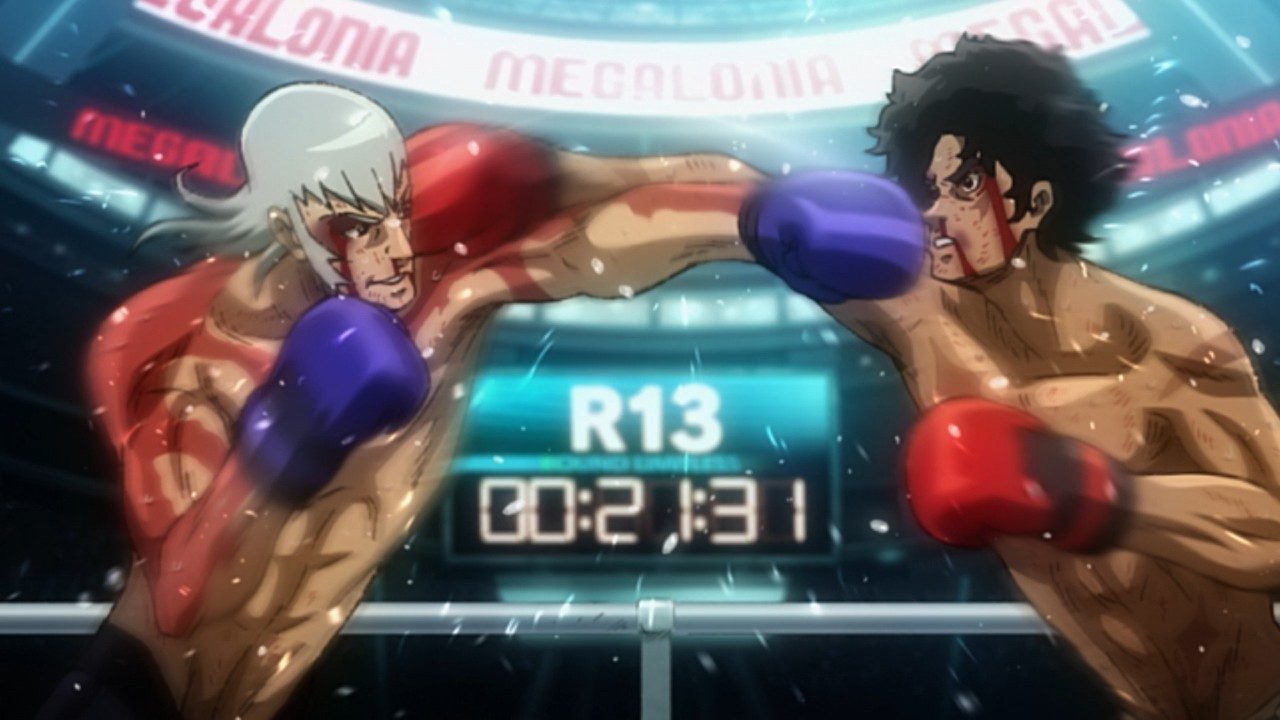
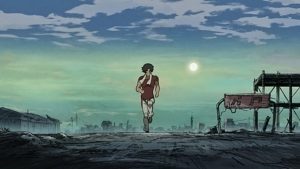

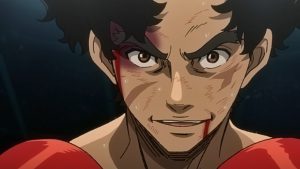
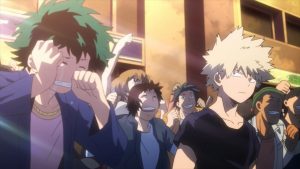
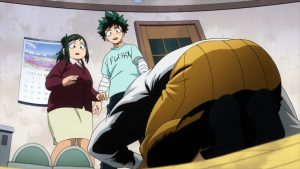
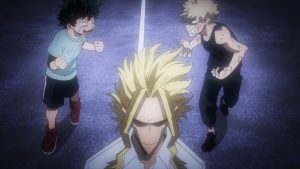
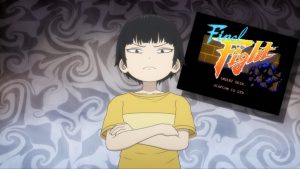

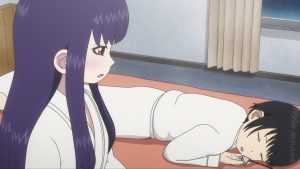
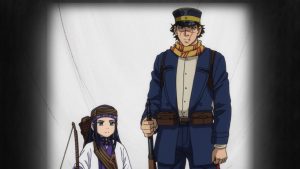
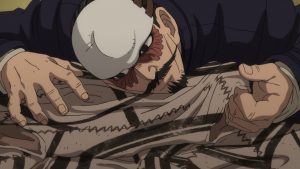
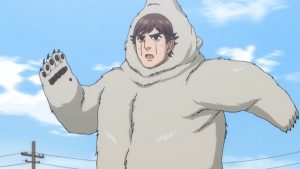
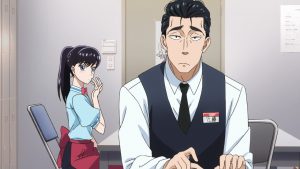

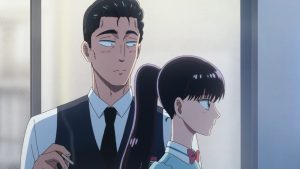


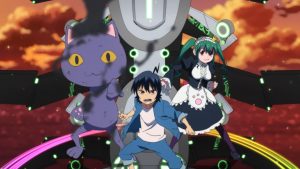
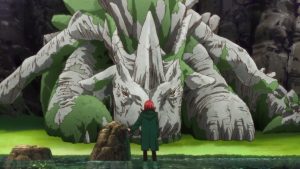
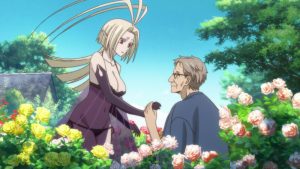

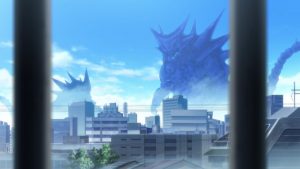
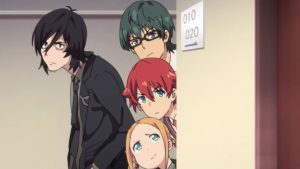

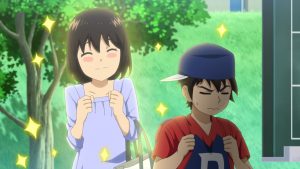


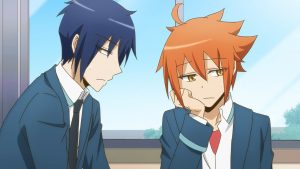
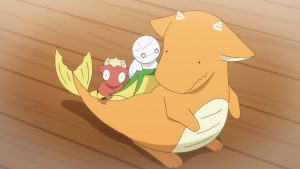
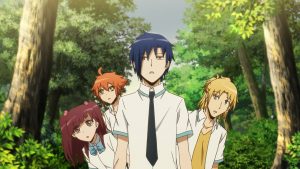
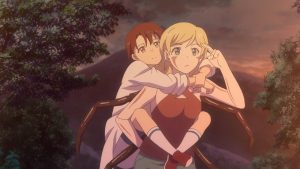

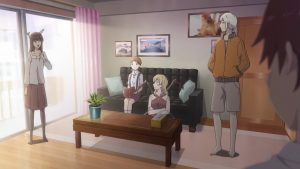


Collectr
December 21, 2018 at 11:05 pmBoth Jikkan (aka Frankenstein Family when finally streamed) and Wakaokami are now completely subbed and can be binged over the holidays as other series end or skip the holiday week. Both are worth it.
Is the weekly release schedule a requirement for coverage? If so, you’re pretty much confined to shows that are streamed. When fansubbing was the only method of delivering translated anime, fansub teams were geared up for a weekly routine that included original translation, but that’s rarely the case nowadays, outside of short series.
So a small suggestion: leave a ‘slot’ in your writing schedule for shows on an irregular schedule. Those can can be fansubbed shows that fall behind, or OVAs/movies, or selected blasts from the past.
Guardian Enzo
December 21, 2018 at 11:25 pmI do have that – most recently it was the specials for ReLIFE, but I cover OVAs and irregularly subbed shows as often as I can. The problem is they always get shuffled to the back of the priority line so it can be a long time between posts.
The streaming age has certainly taken a toll on fansubbing, but a few shows do still get pretty regular fansub releases, like Hi Score Girl. Honestly the threshold of quality for me to cover a show that doesn’t get regular releases either through streaming or subbing is higher, because my life is so busy that if something isn’t a part of my weekly routine it’s very hard for me to make time for it.
Alonom
December 21, 2018 at 11:49 pmFirst time trying my luck at guessing and it turnes out to be the hardest year ever!
1. After the Rain or The One I Love Is a Little Sister, but She’s Not My Little Sister (really colse. very hard to guess. probably after the rain – keeping the winter strike since 2015)
2. Megalo Box
3. Hi Score Girl
4. Hero Acedemia S3
5. Golden Kamuy
6. Planet With
7. Major 2nd
8. SSSS. Gridman
9. Gakuen Babysitters
10. Kokkoku
Wish you a great 2019!
Alonom
December 22, 2018 at 7:13 amCorrection to previous list. Forgot Mahoutsukai
1. After The Rain
2. Megalo Box
3. Hi Score Girl
4. Hero Acedemia S3
5. Golden Kamuy
6. Planet With
7. Mahoutsukai no Yome
8. Major 2nd
9. SSSS.Gridman
10. Gakuen Babysitters
Stefan
December 22, 2018 at 12:57 amI honestly have no idea… I can’t even remember more than 5 shows that I’ve watched this year.
wandering-dreamer
December 22, 2018 at 1:46 amOh hey, I’ve been interested in trying this show but hadn’t had the time to do so yet. Hearing that it’s only 15 minute episodes means that I should have a much easier time squeezing it in!
Guardian Enzo
December 22, 2018 at 5:53 amYou should!
youlikerice
December 22, 2018 at 2:44 amGonna go in and guess as well…
1 Golden Kamuy
2 Planet With
3 Hi Score Girl
4 Boku no Hero Academia 3rd Season
5 Major 2nd
6 Mahoutsukai no Yome
7 Koi wa Ameagari no You ni
8 Megalo Box
9 Gakuen Babysitters
10 Hoozuki no Reitetsu
I don’t know what surely is your number one, but for me it has to be Golden Kamuy. I was too afraid to put Gridman as I wasn’t sure how it was going to end so I decided to omit it.
Earthlingzing
December 22, 2018 at 10:42 amI didn’t follow so many shows this year, but here’s my guess:
1. After The Rain
2. Megalo Box
3. Hi Score Girl
4. Hero Acedemia S3
5. Golden Kamuy
6. Mahoutsukai no Yome
7. SSSS Gridman
8. Gurazeni
9. Kokkoku
10. Hinamatsuri
Guardian Enzo
December 22, 2018 at 12:50 pmInteresting guesses so far…
F_R_I
December 22, 2018 at 1:05 pm1. Hinamatsuri
2. High Score Girl
3. Karakai Jouzu no Takagi-san
4. 3-gatsu no Lion 2nd Season
5. Chio-chan no Tsuugakuro
6. Megalo Box
7. Boku no Hero Academia 3rd Season
8. Chuukan Kanriroku Tonegawa
9. Piano no Mori
10. Major 2nd
Melly
December 22, 2018 at 11:03 pmOooh, let me try!
1. High Score Girl
2. Koi wa Amegari no You ni
3. HeroAca S3
4. Golden Kamuy
5. Megalo Box
6. Mahoutsukai no Yome
7. Karakai Jouzu no Takagi-san
8. Gurazeni
9. Planet With
10. Hinamatsuri
Collectr
December 23, 2018 at 3:00 amYeah, Miira no Kaikata’s a keeper. Except… no one’s keeping it. There are no Blu-rays. The DVDs haven’t been subbed. For English-speaking fans, the web streams are it. Better than nothing, I guess, but the series deserves better than that.
kisshentaitv
December 23, 2018 at 4:34 amcool
kisshentaitv
December 23, 2018 at 4:36 amMiira no Kaikata should be higher on list tho
Westinaction
December 23, 2018 at 4:11 pmUgh, this year was so light in good content that I have no clue. Normally I follow every post for shows I like and can make a decent guess at its year end position based on how Enzo writes about it, but I liked so few shows this year that I barely read any posts at all.
Here’s hoping for a better year in 2019!
Marty
December 23, 2018 at 5:40 pmI know it doesn’t count, but what the heck, here’s my guesses:
1. Boku no Hero Academia Season 3
2. Megalo Box
3. After the Rain
4. Golden Kamuy
5. Planet With
6. SSSS Gridman
7. Gakouen Babysitters
8. Tada-Kun wa koi wo Shinai
9. Kokkoku
10.——–
GinkoYukko
December 24, 2018 at 1:00 amHinamatsuri, a place further than universe , bloom into you should be in top 10
karma
December 24, 2018 at 8:15 amOnly Hinamatsuri has a chance to be in top 10. Two other shows were not to Enzo’s liking.
Wangwang
December 25, 2018 at 5:42 pmOk, I enjoyed SSSS.Gridman. But now that it’s end, can anyone tell me what exactly make an anime Gainax-like? I heard people call some shows that have no mecha or action Gainax-like. There’s even the slice of life anime about the boy who only draw 2D-girl.
Guardian Enzo
December 25, 2018 at 9:27 pmHow many (and which) Gainax anime have you seen? That would help me answer the question.
Wangwang
December 26, 2018 at 9:09 amI’ve only watch FLCL, half of Evangelion and a couple episode of Gurenn Lagann.
Guardian Enzo
December 27, 2018 at 1:54 pmWell see, there’s your problem.
Most Gainax anime didn’t have any mecha in them, and many weren’t even sci-fi. It’s tough to stylistically lump them all together because Gainax’ heavy hitters had quite diverse styles. There is a certain style of humor, a certain look to the action scenes and backgrounds, that has a distinct “Gainax-ness” to it.
Gridman has that. It has also a lot of the same directorial flair that Anno Hideaki’s tv work (NGE and Kare Kano prominently) had. The style is very restrained, with a lot of grand-scale still shots with very vivid details. A lot of concentration on faces. Relatively little BGM.
Akka
December 27, 2018 at 12:21 amI admit I don’t really get why Koi gets a “that’s a tough sell considering how icky the romance between a 17-year old and a 40+ year-old might be” while Mahoutsukai gets a free pass despite being both an even more icky premise (take the same start, adds hefty doses of grooming and “because you were nice to me when I was down”) and falling prey to the worst of such premises (“I don’t know about the real facts but I’m going to blindly side with my captor and trust him with my life, because that’s supposed to be romantic”).
Guardian Enzo
December 27, 2018 at 7:56 amApples and oranges to me, but I don’t think either one gets a free pass. That said, you’re talking about a fantasy where one of the characters is of indeterminate species and has been shown to be emotionally a child vs. an uber-realistic situation where both characters are shown to be as realistic as the author can make them. I just don’t think the two situations are remotely analogous (not to mention that there’s basically no romantic subtext in Mahoutsulkai apart from a few jokes and whatever the audience brings to the equation themselves).
Simone
December 27, 2018 at 11:30 amDunno, to me Mahoutsukai feels like is just putting all the pieces on the board in the right starting positions and then hiding its hands so it can’t be accused of doing anything untowards with them (let the fanfiction writers and doujin artists finish the job). It’s really hard to not get the impression there’s supposed to be *something* romantic about the relationship between Chise and Elias (after all, she IS supposed to become his “bride”). I’m not even bothered especially by it being icky, since as you said Elias defies categorisation anyway, it just felt sappy as hell and didn’t lead anywhere interesting, causing the show to be an example of a plain story in a fascinating setting.
Guardian Enzo
December 27, 2018 at 1:56 pmI think there’s certainly an expectation of something there in the future, but I don’t think there’s any indication that it exists in the present.
Akka
December 28, 2018 at 3:33 amI agree that they are coming from completely different settings and approaches, but I’d say it actually put Mahoutsukai in an even worse situation : Koi takes a somewhat uneasy situation, and runs with it, treating it “realistically”, showing the complexity of said situation and the difficulties which come from it.
Mahou takes an even worse situation, but romantizes it to death, hiding on the way the actual problems or using them in a way that is supposed to be endearing (but I found actually downright creepy). It’s, at the core, a fetish on some sort of Stockholm syndrome between an abused teen and a clueless old something-not-even-human.
I also just don’t see how you can see no romantic subtext when it’s most of the dynamic between the two (I mean, the girl is ready to blindly follow an old monster who only tell her half-truth against people who actually try to engage in explaining things to her, because “he was nice to me” when “being nice” is talking to one as if they were a convenient possession, and we are supposed to find this cute…), the rest being a mentor-pupil relation (so add to the age gap the authority relationship and some sort of father-figure one, and I’d say Koi doesn’t even register as a blip in the creepy-o-meter in comparison).
hgfdsahjkl
December 27, 2018 at 6:42 amI think if boku no hero was one-cour(13 ep) this year it should have taken the first spot,but the 2nd cour wasnt that good,Koi wa Amegari no You ni and Tensei Shitara Slime are my most enjoyable series this year
but again I havent seen golden kamuy yet
Simone
December 28, 2018 at 1:27 amSo this leaves, let’s see, Hinamatsuri, Megalobox, My Hero Academia S3 and I guess Golden Kamuy for top four?
JJ
December 28, 2018 at 1:44 amThree of those are locked in, but I’d be surprised if Hinamatsuri as made it this far – GE seemed to like it but hardly ever gush over it.
High Score Girl will be the fourth, in fact I think it will be fourth; the compression needed to get to where HSG ended will probably count against the adaptation.
sweejen
December 28, 2018 at 3:41 amYes, I agree that Hi Score Girl will be in there–I honestly thought it and Planet With would be vying for the top two spots.
JJ
December 28, 2018 at 5:50 amUltimately, three of these series have composition problems in some form. Although they all dealt them admirably (far better than most series), the one that did not stands out somewhat.
Therefore, I’ll go out on a limb – 4) Hi Score Girl, 3) Golden Kamuy, 2) My Hero Academia S3, 1) Megalo Box.
JJ
December 28, 2018 at 10:55 pmAnd just in case you were wondering why I did not take up a career in fortune telling…
Guardian Enzo
December 28, 2018 at 11:20 pmIf it makes you feel any better I wasn’t 100% decided on this slot literally until I started typing.
say
December 29, 2018 at 12:46 amI feel like Watakoi would deserve a spot on the list. I haven’t finished watching any of the above mentioned anime, probably I wasn’t that invested in them. Also Kokkuki was fine.
GC
December 30, 2018 at 12:21 amI wonder what today’s anime/gaming fans thought of High Score Girl and its depiction of the history of video games? These PS4, Switch, and X-Box kids of today have no idea what kids went thru.
youlikerice
December 30, 2018 at 12:39 amDang. After seeing this list update day by day I totally forgot about Gegege. I hope Gegege makes it on your top ten.
Guardian Enzo
December 30, 2018 at 12:51 amNot eligible. Ongoing.
I will say this, though – that really ugly stretch in the middle of the Western Youkai arc would have kept it out of the Top 10 even if it had been. Top 20 for sure. But still the best single anime episode of the year.
brigid001
December 30, 2018 at 4:16 amLast two spots remaining! My guesses are:
1: Megalo Box
2: Kokkoku
leongsh
December 30, 2018 at 3:46 pmYou forgot Boku No Hero Academia. I expect it to be his No. 1. It would be a major upset if it wasn’t. Between Megalobox and Kokkoku, I would say Megalobox is the better show.
leongsh
December 30, 2018 at 6:19 pmMajor upset – Boku no Hero Academia not No. 1.
brigid001
December 31, 2018 at 12:56 amDarn for some reason I didn’t think BNHA S3 was eligible…I don’t even know why haha. But I guess this makes the number 1 spot a lock now.
Haraga
December 30, 2018 at 4:43 amI think like many others here, I recently watched Hi Score Girl on Netflix and read your episode posts after finishing watching each one, and both the show and the posts were fantastic.
I take much more issue with Akira than you do, and particularly her silence, which makes her much less grounded character to me than the brilliantly written other two, but this and visuals are my only complaints. For someone who is into Japanese retro gaming like me this is going to be a series I rewatch for years to come.
Personally Hinamatsuri was the series that connected with me the most this year, but I can see your argument for Hi Score Girl being the favorite one. When it is good, it is really, really good.
Anyway, thank you for highlighting Hi Score Girl, and I hope I can discover even more sleepers through your blog in 2019!
Guardian Enzo
December 30, 2018 at 10:25 amBelieve me, I hope so too! And thank you.
I do believe she’s less grounded than the other two, but with these caveats:
1. Haruo and Hidaka are so grounded that’s a very high bar.
2. She’s less less grounded than you’d expect, given that she never speaks.
3. She’s supposed to be less grounded. She represents the “MGX” element here – the woman of mystery.
Haraga
December 30, 2018 at 6:55 pmI totally understand her place in the story and why she was contrasted to other characters. It is just that there are too many anime tropes for her character I find too negative: silent girl, ojou-sama, girl that punches boy, girl who constantly blushes, scaredy cat girl, etc.
Is there an interesting character hidden behind the tropes? Absolutely, and I like the idea of her using video games as a communication tool. Would her character benefit from dropping 1-2 of those tropes? Yes, and she would still remain otherworldly and mysterious to Haruo. It would also help the show with non-anime audiences, as I can see her character be the dealbreaker (well, besides CG) for many people.
Guardian Enzo
December 30, 2018 at 7:50 pmI get where you’re coming from here, though it doesn’t generally cross into problem territory for me. The one exception is the punching, as the “violent girl” trope is one I especially detest.
JJ
December 31, 2018 at 2:07 amCan’t say I disagree with the top spot on reflection. To so expertly reduce, refresh and revise a classic tale while keeping the pathos intact is a remarkable achievement.
The burning question to my mind is where would Megalo have placed in 16/17?
Guardian Enzo
December 31, 2018 at 11:25 amWithout sitting down and seriously deconstructing that question, I would guess #3-4 in ‘17 (an average year) and #5-6 in ‘16 (a very good one). That’s not to imply Megalo Box isn’t great, ‘cause it is. It just isn’t a towering masterpiece.
slazer
December 31, 2018 at 11:00 amYay, Koi!!! I was kind of shocked to see it so low when it first was put on the list. I would have bumped it up just for the scene where Tachibana is seated, and blows her hair out of her eyes, which is unlike anything I’ve ever seen in anime.
And yeah, Megalo Box!
Guardian Enzo
December 31, 2018 at 11:20 amIn hindsight it simply demanded to go higher. What really got me thinking was that it was the one show on the list I really felt the urge to rewatch.
youlikerice
December 31, 2018 at 11:43 amI am honestly surprised you put Megalo Box at #1. It’s a good show, but like you said just doesn’t feel very #1 worthy. My initial guess was #8 so seeing it higher and at #1 really surprised me.
Now I’m curious how your #11-20 will look like.
Guardian Enzo
December 31, 2018 at 12:09 pmWhat would you have ranked #1?
youlikerice
December 31, 2018 at 10:33 pmFor me Golden Kamuy. But like you said near the end of the first season where it kind of tapered off kind of holds it back from truly being a #1 series.
I also agree with your statement where if Tsuki ga Kirei did come out this year that would have easily been number one for me this year. I’m also surprised with the omission of Babysitters, which for me is a top #5, hopefully it makes the midrange of #11-20.
Here’s hoping to a better 2019 starting with Mob Psycho II.
Guardian Enzo
January 1, 2019 at 12:55 amNo spoilers but GB was a painful, painful omission from the top 10.
Simone
December 31, 2018 at 6:57 pm“and one can infer from that 2018 was a year without any masterpieces in anime”
Honestly, I think your curse was that 2018 was not a year in which anime went much after your tastes. I experienced the same with my girlfriend – never before has there been a year in which I followed and enjoyed so many shows that she didn’t care for. For many people, this was a great year. I have a lot of shows that would have made my Top 10 that don’t even appear here. Most conspicuously, A Place Further Than The Universe and Devilman Crybaby, but also Yuru Camp, Shoujo Kageki Revue Starlight, Asobi Asobase, possibly even Cells at Work or Zombieland Saga (kind of torn about that one). I also liked Gridman and its ending a great deal more than you. Not enough to put it at number 1, but probably enough to make the top three.
Oh, well, here’s to hoping that next year has something more for you too. Mob Psycho S2 and Promised Neverland seem like a shoe-in, and personally I also think that Kaguya-sama is absolutely great and will step in as the greatest anime rom-com since Ore Monogatari unless they seriously screw it up. And the trailers look like they’re nailing it.
Guardian Enzo
December 31, 2018 at 8:21 pmNo question subjectivity is a big part of this. I whiffed on a lot of the shows a lot of folks really loved, and some of the shows I had highest expectations for (including Devilman) disappointed me to varying degrees. Horses for courses I guess.
I’m not so sure Neverland is top 10 material but if Mob isn’t AotY for me I’ll be kind of stunned. And yes, I’m looking forward to Kaguya despite not having read the manga. Thanks for all your participation this year!
Simone
December 31, 2018 at 10:54 pmOut of curiosity, did you ever finish Devilman? I consider its second half to be by far its strongest suit and I remember you were having problems with the first.
Also, something curious that you can’t deny is that this has been the best year ever for rap in anime XD. Megalobox takes the cake, but Devilman also had some really good flows (most famously the “butterfly” scene) and Aggretsuko and Zombieland Saga both featured rap battles (the latter with accompaniment of shamisen, which was something straight out of Samurai Champloo). Is this the birth of a new trend :D?
Guardian Enzo
January 1, 2019 at 12:58 amYeah it’s funny, I was just thinking about how good a year it was for rap in anime. Megalo Box and Devilman obviously (the best part of that series for me) and also the best part of Zombieland before I got bored with it.
I think I have about 3 eps of Devilman left. I keep meaning to finish it but it’s just never grabbed me.
karma
January 2, 2019 at 10:38 amTo the list of things that made 2018 a pretty good year for anime I’d add:
– Lupin III: Part V – a successful attempt to make the old franchise more up to date
– Yagate Kimi ni Naru – the best shoujo-ai anime in recent years
Marty
January 1, 2019 at 5:01 amIn your opinion, what makes the difference between a great show (Megalo Box) and a true timeless masterpiece?
Guardian Enzo
January 1, 2019 at 10:57 amIn the immortal words of Potter Stewart, “I know it when I see it”. It comes down more to personal impact that anything else, but there can be a lot of factors – originality, flawless execution, especially stunning production, etc..